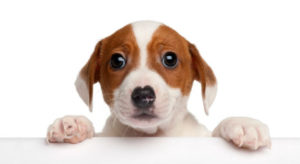What we worry about these days

Besides making us worry about getting sick, running out of money, and forgetting who our friends are, COVID-19 has us afraid for dogs. Not because we believe it could be transmitted to or by dogs, but because the practices we must follow to stay healthy are problematic for dogs.
Separation anxiety
Staying at home all the time with your dog is not good for him.
My dog Billie is thrilled that I’m staying home. We wake up together, work together, eat together, and fall asleep — together. Once my schedule changes (as I assume it must), she will be due for a huge case of separation anxiety. She’s already too stuck on me as it is – she woofs ferociously and forlornly when I don’t take her with me to get the mail, and I can’t take a shower alone.
We often see separation anxiety in newly homed rescue or shelter dogs — their routine is upside down. They settle on the new owner as the one constant in their lives, especially if that person has treated them to a weekend of petting, play, and good food. Monday comes, and it’s time to go to work, and the refugee is left alone, perhaps for hours. No wonder the separation stings.
What can you do?
Stage exits and entrances of short duration. Come and go without fanfare, even if for a few seconds at a time. Remind your dog that you come and go, and then come back.
Do not stop confining your dog, whether in a crate, exercise pen, or dog room. She will need this survival skill for the rest of her life — for visits to the vet, when company comes, or when you are in the hospital, and she stays overnight with a friend.
Get out of your PJ’s and work in your clothes. Otherwise, your clothes will become a trigger for your impending absence.
You can’t socialize a puppy AND shelter in place
Puppies need to meet puppies, people, and the world at a young age. They can’t do this at home.
From 10 to 16 weeks, puppies should be out in the world, playing with other puppies, greeting people, and developing confidence. Your puppy doesn’t know you can’t do any of these things because you are under a stay-at-home order. Miss this socialization window, and he will bark and lunge at dogs, hide behind your legs when he sees new people, and bolt from your neighbor’s trash cans. Trainers who specialize in dog behavior problems should see an uptick in their client load 6-18 months from now as this crop of puppies hits adolescence and adulthood. Trouble is, it’s pretty darn late in the game by then.
What can you do?
Network online and allow your puppy to socialize (in person) with puppies and people you trust. Take him on errands with you. Walk him around areas you are allowed to walk in — not just your neighborhood. Until there is evidence that dogs do need to practice social distancing, I choose to continue to allow my dogs to play with other dogs and people within my circle of trust. In the absence of a single case of human/canine transmission, I want to do the right thing by the dogs and puppies in my care and meet their developmental needs.
Six months from now, will we be talking about “COVID puppies” — shorthand for a group of juveniles who need remedial socialization to enjoy the world they are suddenly free to explore? And will we describe “COVID distress” in otherwise normal adults struggling to recover from separation anxiety? I hope not.
In our well-meaning efforts to spend time with our dogs, now that time is suddenly available, let’s not forget to respect the dogs we love as dogs — animals in need of time alone, time with their own species, and a proper introduction to the world in which we expect them to live.
